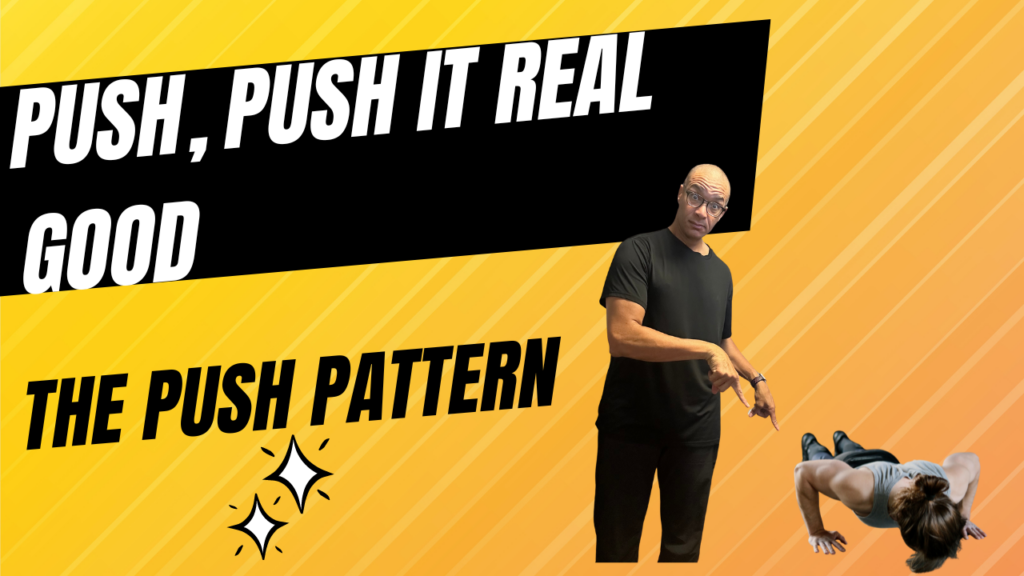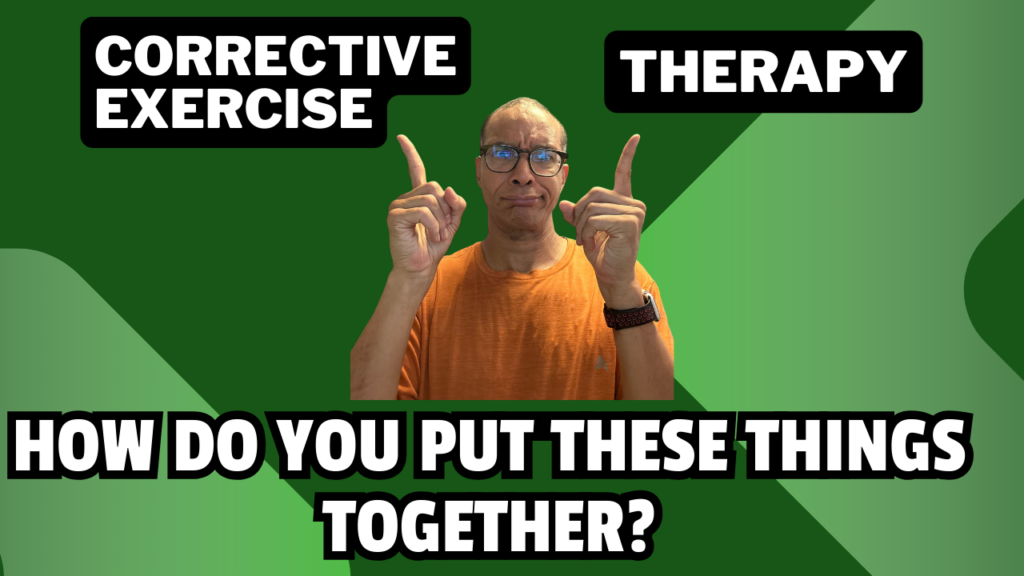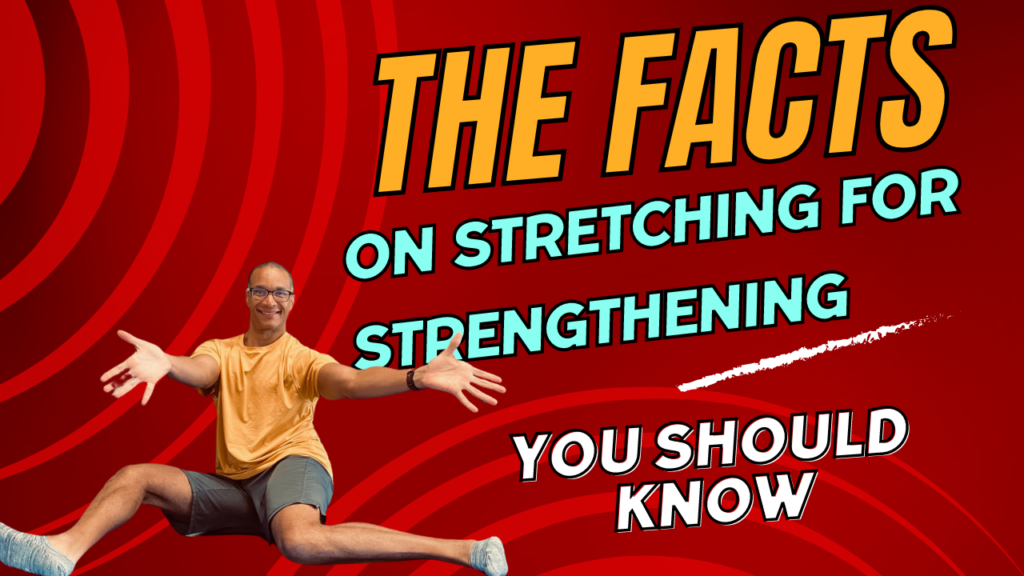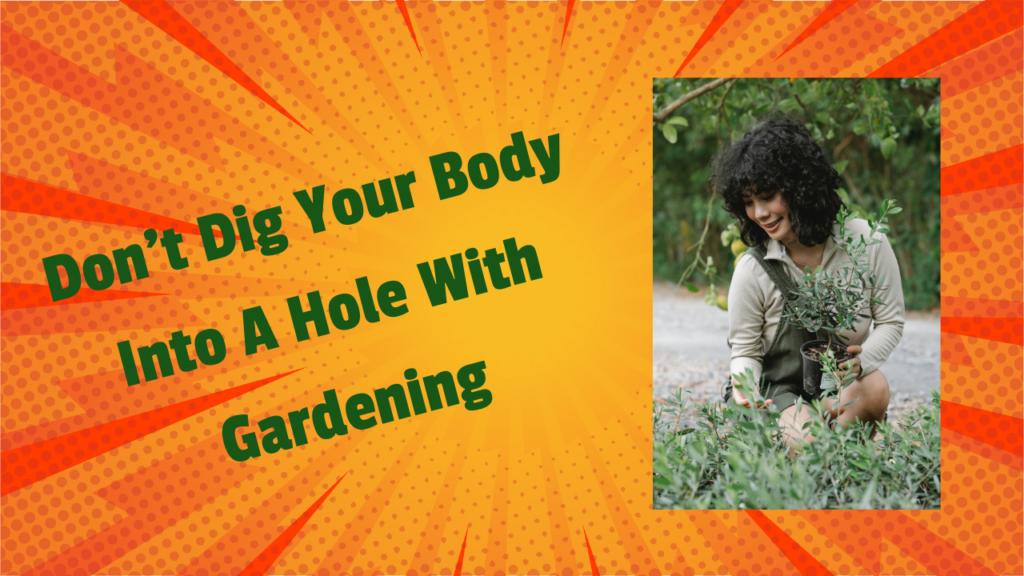The bench press, chest press, and push have a lot of different names, but it is essentially the same pattern. But it’s working a lot more than you think. This compound movement isn’t just about working your chest; it engages multiple muscles and joints, requiring a holistic approach to prevent injuries and enhance performance. Check out this video for a deeper dive of this primal movement.
Check out the full video by clicking on the image below.

The push pattern also called the chest press. Bench press or pushup is one of seven problem movements. People generally do this to work on their pecs, their chest, but it’s not just a chest exercise. So knowing this, the other muscles that contribute to this movement and the progression in this movement is very important to be able to do the movement properly. So stay tuned. We’ll talk about that today in this video greeting. I’m Ekemba Sooh, I’m the owner of SolCore Fitness. I’ve been in the health and fitness field for about 30 years. I started as a personal trainer. I am now a Soma therapist and Soma trainer, which is like a physical therapist, but a little bit more underneath the osteopathic model. But in the beginning, when I was a personal trainer, the chest press or push pattern was a big part of the program.
I put for myself and all my clients, and I used all the available tools. I had dumbbells, barbells, cables, pec deck, body weight, you name it. I knew all the techniques and all the forms, but I noticed that some people and a little bit myself, we start to get a little bit of shoulder pain and at that time they’re taught how to do it and some stretching for it, but it’s not a lot. It’s not very in depth. And so the best he can do is lay off this movement pattern until it got better. But as I delved into becoming more of a osteopathic therapist and trainer, I started to see the biomechanics of his shoulder and I equate that with the push pattern and what it took. And I saw, man, there’s a lot missing in teaching you how to do this movement because it’s more about holistic, not just about technique.
So on this channel, that’s the way I want to present information is holistic. I wanted to tell you about all the different factors involved in whatever we topic we’re talking about, not just give you three steps or three things to do to fix all your problems. So if you’re interested in hearing that, then subscribe to the channel. I put a video about once a week, so don’t forget to hit that bell. Please like and share this video. It tells the YouTube algorithm gods that it’s a good video and I can help more people, it become shared and stay tuned. As I said in the beginning, the chest press is not just for the chest. It’s a compound movement. Compound movement means there’s a bunch of different muscles and joints that are involved in producing a movement. And so the chest press, however you do it, involves the pec, the lats, the shoulders, the biceps, the triceps, the forearm muscles, the hand muscles, the wrist, the wrist joint, the elbow joint, the shoulder joint.
They all need to coordinate themselves along with the rest of your body to produce a movement. So if you’re looking for something to just focus on the chest, you want to work the chest muscle, then you have to work it segmentally. In this case, you want to work it with a peck fly, right? You want to do a pec fly, but you want to do it for more of a diagonal angle, the way the fibers run at different angles. By doing this enough times, I now increase how much I use my pec. So let’s take a stupid example. Let’s say I have not a lot of pec muscle and I go to do a push movement. Doesn’t matter which one, my body will still do it because I’m talented to do a movement, but it does it by compensating the movement so it knows that, oh, look, I don’t have a lot of pec muscles, so that means I need to use more of my latch shoulders, whatever, right?
To produce a movement. That’s just a fancy way of saying you’re cheating. So you’re cheating to do the movement. And so if you don’t care about cheating, then go for it, right? But if you want to do it right, you need to also train all these muscles involved with the push pattern segmentally. By training segmentally, like the fly I talked about for the chest, I now increase how much muscle tissue I have in a certain area. By increasing the muscle tissue, I now increase the neuromuscular coordination or information for my body and also increase the vascularization. There’s more arteries. Now I have a fully functioning pack. Now when I go through and I do the chest press along with all the other muscles I segmentally, did, I now can produce movement much less likely to cheat because it has more available tools. This is because we are a collections of muscles, bones, tendons, ligaments, joints, all connected organs, all connected by fascia as one cohesive machine.
So we’re only as strong as our weakest link, and so if I have no pec muscle, then I’m only strong as that, and so I can work out. But eventually that load will break that link, which means it’ll break my body and force to force it for you to have to pay attention to it. So it’s a very good idea. Do first before we get to the pattern, turn your body segmentally in the areas that you need assistance on. So you’ve gone through your body, you’ve trained it segmentally to work on those weak links. You’ve stretched your body to make sure it’s nice and balanced, and now you want to work on the push press, the push pattern. So there’s a lot of different ways you can do this. You can do it open chain, which means that the last joint is free, like a barbell dumbbell.
You can do a closed chain like a pushup because the last joint is fixed and you push yourself away from the ground. Again, like I said, you can do with barbells, dumbbells cables. You can do a bilateral with both arms. You can do unilateral with one arm, you can do it with rotation. There’s so many different ways you can do this and also combine it with different movements and all that is good, but it’s best to start with the basics because the basics will lead to being able to do these more complex movement more effectively. If I jump too quickly in these complex movements, my body’s going to start to guess how should I do this? Which is going to a hundred percent lead to bad form and complications. So when you’re working on the push pattern for open chain, start with like a chest press with a barbell barbell’s, a little bit easier to control than two dumbbells because you have one bar When you do the barbell.
Start light and have a good posture. Make sure your feet are planted. You have a good posture on a bench. You’re not arching your back or letting your head go backwards. You’re nice and solid on that bench. You can also do it close chain, like I said, like a pushup. So a pushup. You can start anywhere from leaning against the wall to work your way down to the ground to end up either on your knees or on your toes doing a push pattern. But again, it’s best to start with the basics and when focus on the form of this push press or chest press to make sure you have that down first. Have you taken the time to go through your body segmentally and strengthen and stretch it to prepare yourself for this push pattern? Have you worked on working on the basics? First, lemme know in the comments.
So like I said, it’s important to practice this with good form. Now, there’s two big places I see people screw up in this pattern all the time, and they’re very important. The first is posture. The second is the movement between their arms and shoulder blades. So first with posture to break it down simply, if one of your goals of working out is to have good posture and to not get injured, then training your body with good posture is very important. Because simply, if I train myself, I load myself, which is an education to my body with good posture, I will educate and train myself to have good posture. If I turn bad posture in bad form, then I get a bad body, bad form injuries, immobility and weakness. So you want to have a neutral posture when working with these different postures. A neutral posture simply means you keep yourself neutral, which should be good curves in your spine and a nice good posture. So whenever you do it, so when you do a pushup, you’re not leading with your head or dropping your pelvis down, right? You’re going down, up and down evenly, not changing your posture. When you’re doing a chest press, you’re not overly arching your back or taking your head off the bench, right, because pulling you out of posture in that position. The second part is that movement of the arms and shoulder blades. So whenever I do a push pattern, whether open chain or closed chain with a dumbbell or a
Barbell or it could pushup as I do the negative, which would be the weight coming down toward me or me pulling myself down to the ground or whatever surface I’m doing a pushup on my show blade need to retraced. It means come together. So as I come down or bring the weight down, my shoulder blades come together, and then as I do the concentric movement, which is pushing weight away or pushing me away from the surface, I’m doing a pushup with my shoulder blades need to protract, which means go back out to the side. The main muscle involved with that retraction protraction is your straights interior. It starts here on the side of your body, kind of below into the side and in line with your pec and goes around and attaches to your shoulder blades. But like the rest of your body doesn’t work alone.
It works intimately with your rhomboids muscles between your S show blades, and then it works with your satic joint, which is joint behind your S show blades. There’s more. But those three basic areas are involved in the retraction and protraction of the S show blades. This is important because if I can’t allow the force to move into the shoulder blades from the arms and back out, then I get bad forces on the shoulder. That’s a big part. That’s why people have shoulder pain is because they can’t retract ProTrac their shoulder blades. So again, I go back to it again, you want to train these areas segmentally, you want to make sure there Sera interior and all the different fan positions are strong. So when you see a interior exercise, either I call it a shoulder blade pushup, a shoulder blade pushup, or you can do a push plus push press with a dumbbell, you want to work in different angles, right?
Because the Sera interior is a fan. So it’s not just this plane. It works. It works in different planes. Then you also want to train the rhomboids. You want to train and make sure you train them in the above glen humeral angle. Then you want to train the psoriatic joint and also get treatment in that area. So it’s very important, like I said, to train yourself in these primal movements, right? These primal movements, squatting, pushing, pulling, bending, lunging, twisting, and gait are involved in what you do outside of here. I’m pointing to outside my studio. What you don’t want to just jump into those movements because again, those are compound movements, which means they’re involved. There’s a lot of muscles and joints involved in these movements. If you don’t take the time to segmentally, go through your body and train these areas, you will 100% eventually lead to some sort of pain and mobility and weakness because you’ve jumped steps, you’ve ignored your body and what it needs and just gone done what you want to do. So if you’re looking for help on this,
I’d be glad to help. In description below, I’ve got a free ebook is four steps in How to Live a Strong Pain-Free Body to Live a Life of Your Choosing. So I have to do is go to that link, click on it, put information, you get an instant access, or if you want to have more of a conversation in description below, again, you can click on it to my calendar link. You choose a time we’ll talk, and then I’m going to give you valuable information no matter what. And if I see you’re a good fit to work with me, I’ll let you know and how you can, but I want to make sure that your questions are answered first. So thanks for watching. I’ll see you next time.

MOVE BETTER, REDUCE PAIN, AND LIVE LIFE ON YOUR TERMS
it’s not just working out, it’s building a foundation for a better life.
Find out more @







